-
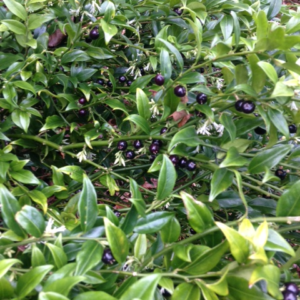
Sweet Box Seed
Sarcococca confusa£15.00 – £25.00 inc. VATSarcococca or Sweet Box is a fantastically useful small evergreen shrub. It has a neat growth habit and produces small, feathery creamy white flowers in the depths of winter. These are highly sweetly scented. The black shiny berries that follow remain on the shrub until the following spring. Thrives in poorish dry soil and shade. Germination is sporadic, so patience is needed!
-
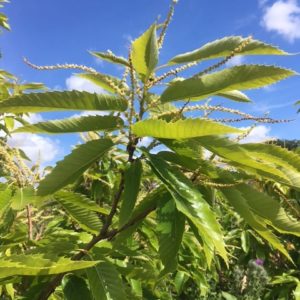
Sweet Chestnut Seed
Castanea sativa£5.00 – £10.00 inc. VATSweet Chestnut is a large, beautiful, quick growing tree. It is often found in parkland as a specimen tree with a smooth grey bark and long dark green toothed leaves which contrast with the long, yellowish spring catkins. Sweet Chestnut produces nuts in warm summers. Eventually, the bark becomes ridged and twisted, giving a spiral pattern up the trunk.
Not for forestry purposes.
-
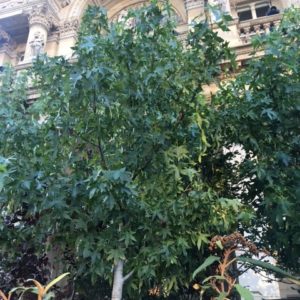
Sweet Gum Seed
Liquidambar styraciflua£5.00 – £10.00 inc. VATSweet Gum is a large deciduous tree which has shining green, leathery, maple like leaves. They turn a fantastic orange, red and purple in autumn. Young shoots have distinctive corky ridges and the sap is fragrant. Although it rarely flowers in this country, the flower heads look similar to those of Rhus and the resulting seed heads look like Plane tree seed balls; it is actually related to Witch Hazels! A fine specimen or woodland tree.
-
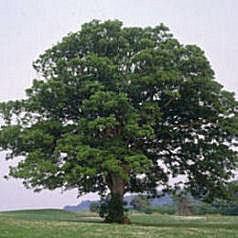
Sycamore Seed
Acer pseudoplatanus£5.00 inc. VATSycamore is a large well known deciduous tree. It is well suited to exposed situations on all soil types. It has dark green leaves and mustard yellow, insect friendly flowers which develop into double winged seeds in autumn. Having lost Elm and now possibly Ash, the Sycamore is a notable tree in the landscape, offering shelter from all weathers. Thumbnail pic is the famous Sycamore in the middle of Hadrian’s Wall, near Hexham, from the film ‘Robin Hood Prince of Thieves’
Not for forestry purposes.
-
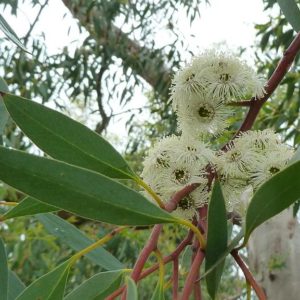
Tasmanian Snow Gum Seed
Eucalyptus coccifera£11.00 inc. VATA fast growing medium sized tree which can survive some winter frost. It has strikingly bloomy leaves and stems as it begins to mature.
-
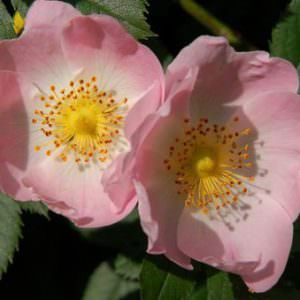
Thornless Rose Seed
Rosa inermis£5.00 inc. VATThe Thornless Rose makes a medium sized climbing or lax-growing shrub. An easy to grow rose with lightly fragranced, simple, pink-red flowers 5cm in diameter in summer. It is a thornless selection of the Dog Rose, often used for rootstock work or for informal hedging. Some red hips are produced in the late summer and autumn.
-
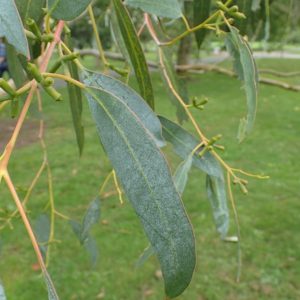
Tingiringi Gum Seed
Eucalyptus glaucescens£5.00 – £14.00 inc. VATTingiringi Gum is a fast growing evergreen with round, even, silver juvenile foliage used in floristry. It coppices well and is good for screening. Adult foliage is elongated, blue-green-silver and aromatic and this develops if the stems aren’t cut back. Like many Eucalyptus, the bark on mature trees shreds off revealing orange, grey, copper, white and grey streaks. Creamy flowers in autumn. Mallee form, which is more shrub-like and multistem
-
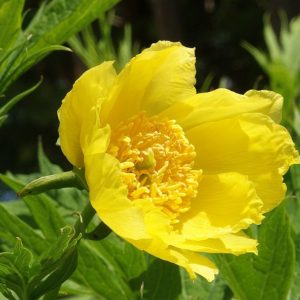
Tree Peony Seed
Paeonia ludlowii£4.50 inc. VATLudlow’s Tree Paeony is sometimes known as Paeony lutea ludlowii and in its native Tibet as ‘God’s Flower’ is a large, slow growing, deciduous shrub. It has ferny leaves with good yellow autumn colour and produces numerous large, open yellow flowers, a bit like poppies, from early to late summer. It is tolerant of most things but won’t flower in deep shade. No pruning is necessary, just the occasional tidy up, the branches are generally unbranched.
-
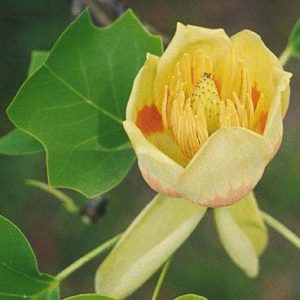
Tulip Tree Seed
Liriodendron tulipifera£5.50 inc. VATTulip Tree is a fast growing beautiful large deciduous tree. Leaves are shaped like cartoon tulips and turn yellow in autumn. The flowers appear from early summer onwards resembling short stemmed tulips or Magnolia. They are a yellow green colour and banded at the base of the petals with orange. Very tolerant of pollution, so where there is space, this is useful as an urban tree.
seed sold is de-winged
-
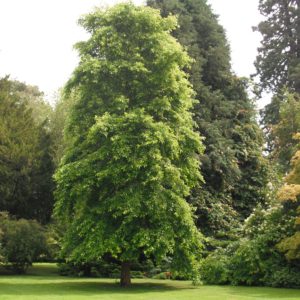
Tupelo, Black Gum Seed
Nyssa sylvatica£2.00 – £4.50 inc. VATTupelo or Nyssa sylvatica is a neat deciduous tree forming a symmetrical pyramid shape, later spreading. Insignificant flowers are a source of nectar for insects. The autumn colour is spectacular turning purple, orange, yellow and red.
-
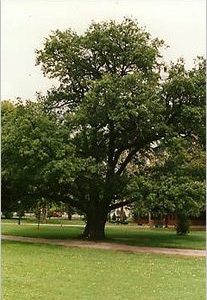
Turkey Oak Seed
Quercus cerris£8.00 – £22.00 inc. VATTurkey Oak is a large deciduous tree and one of the fastest growing oaks. It thrives on chalky soils and near the sea. The leaves are coarsely toothed and slightly rough to the touch and the acorns are bristly/hairy, looking like bad-hair-day hedgehogs. Mature trees have fissured and plated bark.
cup pic courtesy of Javier martin, Public domain, via Wikimedia Commons
leaf and acorn Javier Martin, Public Domain
Not for forestry purposes.
-
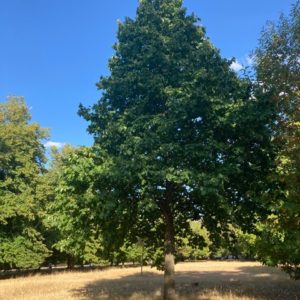
Turkish Hazel Seed
Corylus colurna£5.00 – £10.00 inc. VATTurkish Hazel is a remarkable deciduous tree with a striking symmetrical, pyramidal form. The corky, deeply fissured bark is also an attractive feature. It is the only hazel with a single straight trunk rather than being multi-stemmed. It doesn’t coppice like the European Hazel.
-
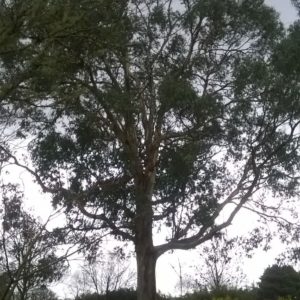
Urn Gum/ Urn Pod Gum Seed
Eucalyptus urnigera£10.00 inc. VATEucalyptus urnigera, Urn Gum or Urn Pod Gum, is considered to be more decorative than E. gunnii. It makes a good specimen tree with silver-blue round juvenile and strap-like silver/grey-green adult leaves. Silver white bark matures to green-grey-white-gold-pink, mottled and peeling. Flowers are white in September from urn shaped buds and the seed cases are urn shaped too. The largest UK specimens grow in the warm damp weather of the Western Scottish Coast.
-
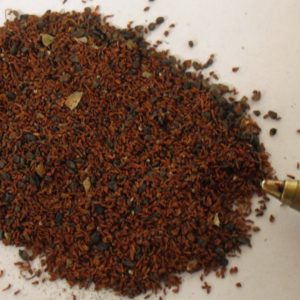
Victorian Silver/ Buxton Gum
Eucalyptus crenulata£6.50 inc. VATA medium sized evergreen tree which can be used as hedging or coppiced for floristry. Compact grey-green, wavy edged foliage turning to green with reddish hints as it matures. White, fluffy, scented flowers in spring. Smooth bark.
-
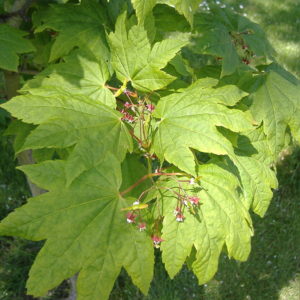
Vine Maple Seed
Acer circinatum£6.00 – £25.00 inc. VATVine Maple is a fine, medium sized deciduous tree with elegant and graceful habit. It can also be grown as a large, multi-stemmed shrub. The small, lime green flowers in tassels in spring are followed by red, winged, sycamore -like seeds. The fresh green leaves are rounded but lobed and turn fantastically bright in autumn – reds, oranges and yellows. It is perfect species for bonsai.
-
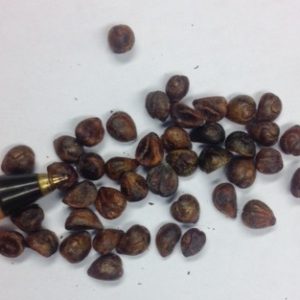
Virginia Creeper Seed
Parthenocissus quinquefolia£5.00 inc. VATVirginia Creeper is a large growing, self-clinging vine ideal for high walls. The deciduous leaves are made up of 5 leaflets, mid veins of which are greyish. They turn a brilliant orange or scarlet in autumn. The fruits are a blue / black colour. It needs very little maintenance.
-
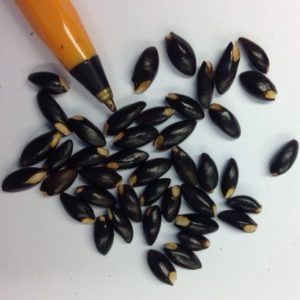
Virginian Witch Hazel Seed
Hamamelis virginiana£5.00 – £10.00 inc. VATVirginian Witch Hazel is the commercial source of Witch Hazel and can range from a large multi-stemmed shrub to a small tree. The flowers have a soft sweet perfume when they appear in the late autumn, with narrow pale yellow crumpled petals. They are a useful food source for late insects. The large simple leaves colour well in the autumn. Witch Hazel ointment is an extraction from the bark in alcohol and can be used to calm skin irritations and reduce inflammation.
-
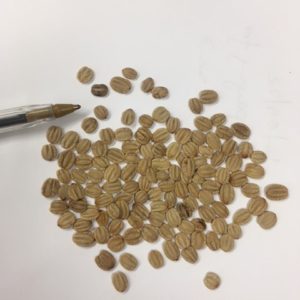
Wayfaring Tree Seed
Viburnum lantana£7.00 inc. VATThe Wayfaring Tree is a large native, deciduous shrub often seen in hedgerows. The ovate leaves and young shoots are covered with a dense tomentum or down. Leaves sometimes turn a dark crimson in autumn. The cream flowers appear in late spring and are followed by oblong fruits that mature from red to black.
-
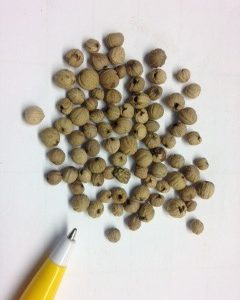
Wedding Cake Tree Seed
Cornus controversa£7.00 inc. VATThe Wedding Cake Tree when grown in the right conditions, semi-shade and dampish, can grow into quite a large shrub. It makes a wonderful architectural shape with tiered and layered branches. The cream flower heads in summer are flat too, adding to the layered effect. Good purple autumn colour. Slow growing and needs space to develop the right shape.
-

White Mulberry Seed
Morus alba£3.00 inc. VATWhite Mulberry is a medium to small tree with lance shaped leaves up to 15cm wide that are the traditional food of silkworms. It grows fast and is quite short-lived – 50 to 80yrs on average. Catkins turn into whitish fruits in the early autumn, changing to pale pink later and are edible. If necessary, prune in late autumn or early winter, other wise the stems bleed.
caterpillar pics courtesy of Srithern /CC BY-SA via Wikimedia
-
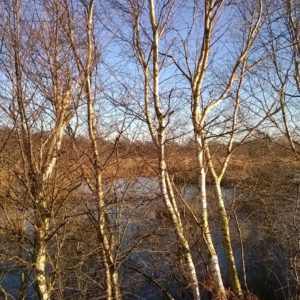
White or Downy Birch Seed
Betula pubescens£5.00 inc. VATDowny Birch thrives on a wider range of soils than Silver Birch, particularly damp soils. It is white barked and similar to Silver Birch but with a more upright growth habit. Younger specimens usually exhibit downy undersides to the leaves and on the stems. It is useful as a pioneer species for planting in difficult and exposed sites.
Not for forestry purposes.
-
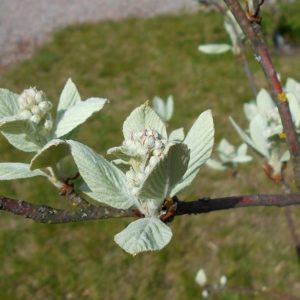
Whitebeam Seeds
Sorbus aria£5.00 – £10.00 inc. VATWhitebeam makes a neat, oval headed tree with grey hairy leaves. It is often planted in streets and gardens. Heads of white flowers in May develop into red berries for the autumn but they are usually eaten by birds before they ripen! Autumn colour is yellow then brown.
-
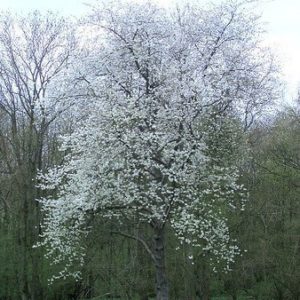
Wild Cherry Seed
Prunus avium£3.00 – £5.00 inc. VATWild Cherry is a medium sized deciduous tree, with bark that turns mahogany red and peels with age. The white cup shaped flowers give a magnificent display in mid to late spring and are visited by early insects. The fruits are small and red to purple, appearing in summer and eaten by birds. The leaves turn crimson-orange in autumn. It is generally found in hedges and on the edges of woods. It will grow in semi-shade but flowers better in full sun.
Not for forestry purposes.
-
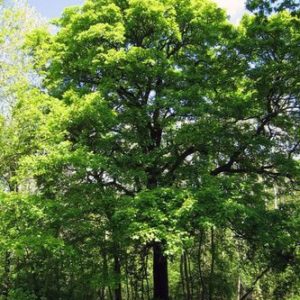
Wild Service Tree Seed
Sorbus torminalis£5.00 – £12.00 inc. VATWild Service Tree is an attractive medium sized deciduous tree with Maple like leaves. They turn from a glossy dark green to bronze yellow in the autumn. The fruits start spherical and when ripe become elongated and are russet brown with darker spots, hence the name ‘Chequer Tree’. They need to be ‘bletted’ (left to go almost bad and soft) to render them edible! Pubs called ‘The Chequers’ are named after the tree rather than the board game, possibly because they used to serve beer/wine made from the fruit. The timber is used as a reddish/orange decorative veneer. There is a great specimen in the environs of Lower Brockhampton Manor (National Trust), but generally the tree is quite rare


Sign up to receive great news and offers